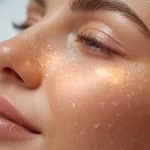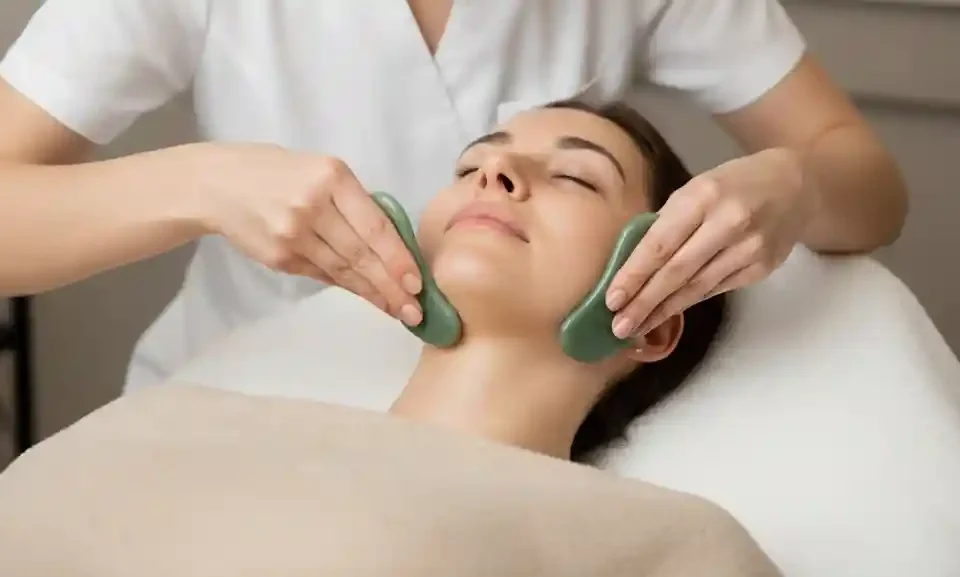
PCA Oxygenating Trio: Your Secret to Instant Glow Without Downtime
11/05/2025
Reclaim Your Confidence: A Guide to Professional Back Facials in Chicago
11/11/2025In the heart of Chicago, IL, where skincare innovation meets timeless beauty traditions, the Korean facial—or K-Beauty facial—has become more than a trend. It’s a philosophy that transforms how we approach skin health. At Skin and Beyond Spa, I, Natallia, have witnessed firsthand how this multi-step ritual can revolutionize your complexion, bringing you closer to that coveted “glass skin” effect that has captivated beauty enthusiasts worldwide.
What makes a Korean facial in Chicago different from traditional facials? It’s not just about the number of steps—though there are typically 10 or more—but about the meticulous layering of hydration, the preventive approach to skincare, and the deep understanding that beautiful skin is built layer by layer, like a crystal stained-glass window. Each step contributes to the final masterpiece: radiant, plump, healthy-looking skin.
The Philosophy of K-Beauty: More Than Skin Deep
The Korean skincare philosophy is fundamentally different from Western approaches. While Western skincare often focuses on correcting problems—treating acne, reducing wrinkles, fading dark spots—K-Beauty emphasizes prevention and maintenance. Think of it as building a fortress of hydration rather than waiting for the walls to crumble before repairing them.
This philosophy centers on three core principles:
1. Multi-Step Layering Unlike the typical 3-4 step routine, a Korean facial involves 10 or more carefully orchestrated steps. Each layer serves a specific purpose, creating a foundation for the next. This isn’t complexity for complexity’s sake—it’s about giving your skin exactly what it needs, when it needs it.
2. Hydration as the Foundation While many Western treatments prioritize exfoliation and active ingredients that can be harsh, K-Beauty focuses on maintaining the skin’s moisture barrier. When your skin is properly hydrated, it functions better, looks healthier, and is more resilient against environmental damage.
3. Glass Skin as the Goal The term “glass skin” refers to skin that’s so well-hydrated, even-toned, and smooth that it appears translucent—like glass. It’s not about having perfect skin (which doesn’t exist), but about achieving optimal skin health through consistent, gentle care.

Understanding the 10+ Steps: Why Each Layer Matters
The Korean facial isn’t a random sequence of products. Each step has a specific purpose, and skipping one can affect the entire process. Let’s break down why each stage is crucial:
Step 1-2: Double Cleansing
The foundation of any Korean facial begins with double cleansing—first an oil-based cleanser, then a water-based one. Why two? Oil cleansers break down makeup, sunscreen, and sebum that water alone can’t dissolve. Water-based cleansers then remove sweat, dirt, and any remaining residue. This two-step process ensures your skin is truly clean, not just surface-clean. When your pores are properly cleared, everything that follows can penetrate more effectively.
Step 3: Toning
In Western skincare, toners often feel like an optional step. In K-Beauty, they’re essential. Korean toners are hydrating, not astringent. They rebalance your skin’s pH after cleansing and prepare it to receive active ingredients. Think of it as priming a canvas before painting—the better the preparation, the better the final result.
Step 4: Exfoliation (When Needed)
Exfoliation in a Korean facial is typically gentler than what you might experience elsewhere. It’s about removing dead skin cells to reveal fresh, radiant skin underneath, not scrubbing away layers. This step is customized based on your skin’s needs—some clients benefit from gentle enzyme exfoliation, while others might need a mild chemical exfoliant.
Step 5: Extraction
For those with congestion, this step involves carefully removing blackheads and whiteheads. In a professional setting like Skin and Beyond Spa, this is done with sterile tools and proper technique to minimize trauma to the skin. The key is doing this after your skin has been properly softened and prepared—making extraction gentler and more effective.
Step 6: Massage
Korean facial massage isn’t just relaxing—it’s therapeutic. Using specific techniques, the massage improves circulation, reduces puffiness, and helps products penetrate deeper. It also stimulates lymphatic drainage, which can reduce inflammation and give your skin that healthy glow.
Step 7: Masks
Masks in a Korean facial serve multiple purposes. Sheet masks, for instance, create an occlusive barrier that forces hydration into the skin. Clay masks might be used for deep cleansing, while hydrogel masks provide intensive hydration. The type of mask depends on your skin’s current needs.
Step 8: Serums and Ampoules
This is where targeted treatment happens. Serums are concentrated treatments that address specific concerns—brightening, anti-aging, hydration, or acne. In a Korean facial, multiple serums might be layered, each addressing a different aspect of skin health. The layering technique ensures each product can work effectively without overwhelming the skin.
Step 9: Essence
Essences are a unique K-Beauty category—lighter than serums but more than toners. They’re packed with active ingredients and help lock in previous layers while adding another dimension of hydration. This step epitomizes the K-Beauty philosophy: more is more when it comes to moisture.
Step 10: Moisturizer
A good Korean moisturizer doesn’t just sit on top of your skin—it seals in all the hydration from previous steps. It creates a protective barrier that prevents moisture loss while allowing your skin to breathe. The consistency and formulation are chosen based on your skin type and the season.
Step 11: Eye Cream
The delicate eye area gets its own specialized treatment. Korean eye creams are often lighter and more hydrating than Western versions, focusing on preventing fine lines through hydration rather than aggressive wrinkle-fighting.
Step 12+: Protection (SPF)
Even in a facial setting, sun protection is emphasized. After a professional Korean facial, your skin is primed and hydrated—making it crucial to protect it from UV damage. This step reinforces the preventive philosophy: protect today to prevent problems tomorrow.

The Science Behind K-Beauty Ingredients
What makes Korean facial ingredients so effective? It’s not just about using trendy products—it’s about understanding how specific ingredients work together to support skin health.
Fermented Components
Fermentation is a cornerstone of K-Beauty. Fermented ingredients like galactomyces, bifida ferment lysate, and fermented rice water have smaller molecules, allowing them to penetrate deeper into the skin. Fermentation also creates beneficial byproducts like peptides and amino acids that support skin health. These ingredients help strengthen the skin barrier and improve overall texture.
Hyaluronic Acid
While hyaluronic acid isn’t exclusive to K-Beauty, Korean formulations often use it in multiple molecular weights. Low molecular weight HA penetrates deeper for long-term hydration, while high molecular weight HA sits on the surface, creating an immediate plumping effect. This multi-weight approach ensures hydration at every level of your skin.
Ceramides
Ceramides are lipids that make up about 50% of your skin’s barrier. K-Beauty products often include ceramide complexes that help repair and maintain this barrier. When your barrier is healthy, your skin retains moisture better and is less reactive to environmental stressors.
Peptides
Peptides are amino acid chains that signal your skin to produce more collagen. Korean formulations often combine multiple peptides to target different aspects of aging—some for firmness, others for elasticity, and some for hydration.
Plant Extracts
Korean skincare heavily features botanical ingredients:
- Green Tea Extract: Rich in antioxidants, it helps protect against free radical damage and has anti-inflammatory properties.
- Ginseng: Known for its revitalizing properties, ginseng can improve circulation and give skin a healthy, radiant appearance.
- Snail Mucin: This unique ingredient contains glycoproteins, hyaluronic acid, and peptides that help with hydration, wound healing, and skin repair.
Hanacure vs. Classic Korean Facial
You might have heard of Hanacure facials—the “mask that makes you look like a zombie” that went viral. While Hanacure uses Korean skincare principles, it’s a specific product line, not representative of all Korean facials. A classic Korean facial is a comprehensive, multi-step treatment focusing on hydration and prevention. Hanacure is a single-use mask treatment that provides temporary tightening and firming effects.
The key difference: a traditional Korean facial is a complete ritual that addresses your skin’s needs through multiple steps and products, while Hanacure is a targeted treatment mask. Both can be effective, but they serve different purposes in your skincare journey.
What to Expect During Your Korean Facial in Chicago
When you book a Korean facial at Skin and Beyond Spa, here’s what the experience typically involves:
Duration and Flow
A professional Korean facial typically lasts 60-90 minutes. This isn’t rushed—it’s a dedicated time for your skin to receive comprehensive care. The treatment begins with a consultation where I assess your skin’s current condition and discuss your goals.
The Sensation
Unlike some aggressive treatments, a Korean facial should feel relaxing and nurturing. You might feel gentle pressure during massage, coolness from masks, and a slight tingling from certain serums, but discomfort shouldn’t be part of the experience. The goal is to leave you feeling refreshed, not red and irritated.
Frequency: Course vs. Maintenance
For optimal results, I typically recommend:
- Initial Course: 4-6 treatments spaced 2-3 weeks apart to reset your skin and establish a healthy baseline
- Maintenance: Once every 4-6 weeks to maintain results and support your home care routine
This frequency allows your skin to benefit from the intensive hydration and treatment while maintaining the improvements through proper home care.
Immediate After-Effects
After your Korean facial, you’ll likely notice:
- Immediately plumped, hydrated skin
- A healthy glow from improved circulation
- Reduced puffiness (especially around the eyes)
- Smoother texture
Some clients experience slight redness immediately after, which typically subsides within an hour. This is normal and indicates increased blood flow to the surface.
Important Contraindications: When Korean Facials Aren’t Right
While Korean facials are generally gentle, they’re not suitable for everyone. Honest communication about contraindications is crucial for your safety:
Active Inflammation
If you have active acne with inflammation, open wounds, or infections, you should wait until your skin has healed. The multi-step process and certain ingredients could irritate compromised skin.
Allergies
Korean facials often include unique ingredients like snail mucin and fermented components. If you have known allergies to shellfish (snail mucin can trigger reactions in some people), or sensitivity to fermented products, please inform me before treatment.
Pregnancy Considerations
Some active ingredients commonly used in Korean skincare—like certain peptides, retinoids, or high concentrations of active botanicals—may not be recommended during pregnancy. Always inform me if you’re pregnant or trying to conceive so I can adjust the treatment accordingly.
Recent Procedures
If you’ve had recent cosmetic procedures like chemical peels, microdermabrasion, or laser treatments, you’ll need to wait until your skin has fully recovered before having a Korean facial. Combining treatments too soon can cause irritation.
Sensitive Skin Conditions
Those with conditions like rosacea, eczema, or severe sensitivity should discuss their condition with me. While Korean facials can be adapted for sensitive skin, the treatment protocol may need modification.

Aftercare and Home Maintenance: Making Results Last
What you do after your Korean facial is just as important as the treatment itself. Here’s how to maximize and maintain your results:
Immediate Aftercare (First 24 Hours)
- Avoid Active Ingredients: Skip retinoids, acids, and other actives for at least 24 hours. Your skin has been primed and hydrated—let it settle.
- Keep It Simple: Use splash of waters and hydrating products. Your skin needs time to absorb all the benefits from the facial.
- No Makeup (If Possible): Give your skin a few hours to breathe. If you must wear makeup, use mineral-based products that won’t clog pores.
- Stay Hydrated: Drink plenty of water to support your skin from the inside out.
Daily Home Care Routine
To maintain the benefits of your Korean facial, adopt a simplified version of the K-Beauty routine at home:
- Morning: Splash of water → Hydrating toner → Serum → Moisturizer → SPF
- Evening: Oil cleanser → Water cleanser → Toner → Treatment serum → Moisturizer
The key is consistency and gentleness. You don’t need 10 steps at home—focus on cleansing, hydrating, and protecting.
SPF: Non-Negotiable
After a Korean facial, your skin is primed and healthy. Sun exposure can reverse all that good work. Use a broad-spectrum SPF 30+ daily, even on cloudy days. This single step can prevent more skin damage than any treatment can repair.
Compatibility with Other Treatments
Korean facials work well with other treatments when properly spaced:
- Chemical Peels: Wait 2 weeks before or after
- Microdermabrasion: Wait 1 week before or after
- Microneedling: Wait 2-3 weeks before or after
- Botox/Fillers: Korean facials can be done the same day (before injectables) or wait 24 hours after
Always consult with me about combining treatments.
Professional vs. At-Home: Understanding the Difference
While you can create a K-Beauty routine at home, there’s a significant difference between professional Korean facials and home routines:
Technique and Expertise
As an expert esthetician, I understand proper extraction techniques, massage methods, and how to customize treatments based on your skin’s immediate needs. Professional tools and sterile equipment make extractions safer and more effective than attempting them at home.
Product Quality and Concentration
Professional products often contain higher concentrations of active ingredients and are formulated for clinical use. While excellent home products exist, the professional-grade formulations in a spa setting can provide more dramatic results.
Customization
During a facial, I can see and feel your skin’s response in real-time, adjusting the treatment accordingly. At home, you’re working with a fixed routine that can’t adapt to your skin’s daily needs.
Results
A professional Korean facial provides intensive, multi-step treatment that’s difficult to replicate at home. The combination of professional-grade products, expert technique, and dedicated time creates results that typically last longer and are more pronounced than home care alone.
That said, home care is essential for maintaining results. Think of professional facials as intensive treatments and home care as daily maintenance—both are necessary for optimal skin health.
Realistic Expectations: What Korean Facials Can and Cannot Do
Korean facials are excellent for:
- Hydration: Dramatically improving skin’s moisture levels
- Texture: Smoothing rough patches and improving overall skin feel
- Glow: Enhancing your natural radiance through improved circulation and hydration
- Prevention: Maintaining healthy skin and preventing future issues
- Relaxation: Providing stress relief that benefits your skin
However, Korean facials are not a replacement for:
- Medical Treatments: They won’t cure severe acne, remove deep wrinkles, or treat medical skin conditions
- Surgical Procedures: They can’t replace procedures like facelifts or laser resurfacing
- Dermatological Care: Serious skin conditions require medical attention
- Long-Term Commitment: One facial won’t transform your skin—consistency is key
The best approach is to view Korean facials as part of a comprehensive skincare strategy that includes professional treatments, proper home care, sun protection, and healthy lifestyle choices.
Frequently Asked Questions
How often should I get a Korean facial?
For optimal results, start with a course of 4-6 treatments every 2-3 weeks, then maintain with monthly facials. However, frequency depends on your skin’s needs, lifestyle, and budget. I can recommend a personalized schedule.
Will a Korean facial work for my skin type?
Korean facials can be adapted for all skin types—oily, dry, combination, or sensitive. The key is customization. I will adjust products and techniques based on your specific needs.
Can I wear makeup after a Korean facial?
It’s best to avoid makeup for a few hours after treatment to let your skin breathe and absorb the benefits. If you must wear makeup, choose mineral-based products and wait at least 2-3 hours.
What’s the difference between a Korean facial and a regular facial?
Korean facials focus on hydration, prevention, and multi-step layering, while traditional Western facials often emphasize extraction and exfoliation. Korean facials are typically gentler and more comprehensive in their approach to skin health.
How long do the results last?
Immediate results (glow, hydration) last 2-3 days, while cumulative benefits from a course of treatments can last weeks to months with proper home care. Regular maintenance facials help sustain results long-term.
Ready to Experience the K-Beauty Difference?
If you’re in Chicago, IL, and ready to experience the transformative power of a Korean facial, book your consultation with me, Natallia, at Skin and Beyond Spa. Whether you’re looking to achieve that coveted glass skin effect or simply want to give your skin the intensive hydration it deserves, Korean facial treatments at Skin and Beyond Spa are designed to meet your unique skincare goals.
Remember, beautiful skin isn’t achieved overnight—it’s built layer by layer, step by step, through consistent care and the right treatments. Your journey to healthier, more radiant skin starts with understanding your skin’s needs and choosing treatments that support its natural health.






